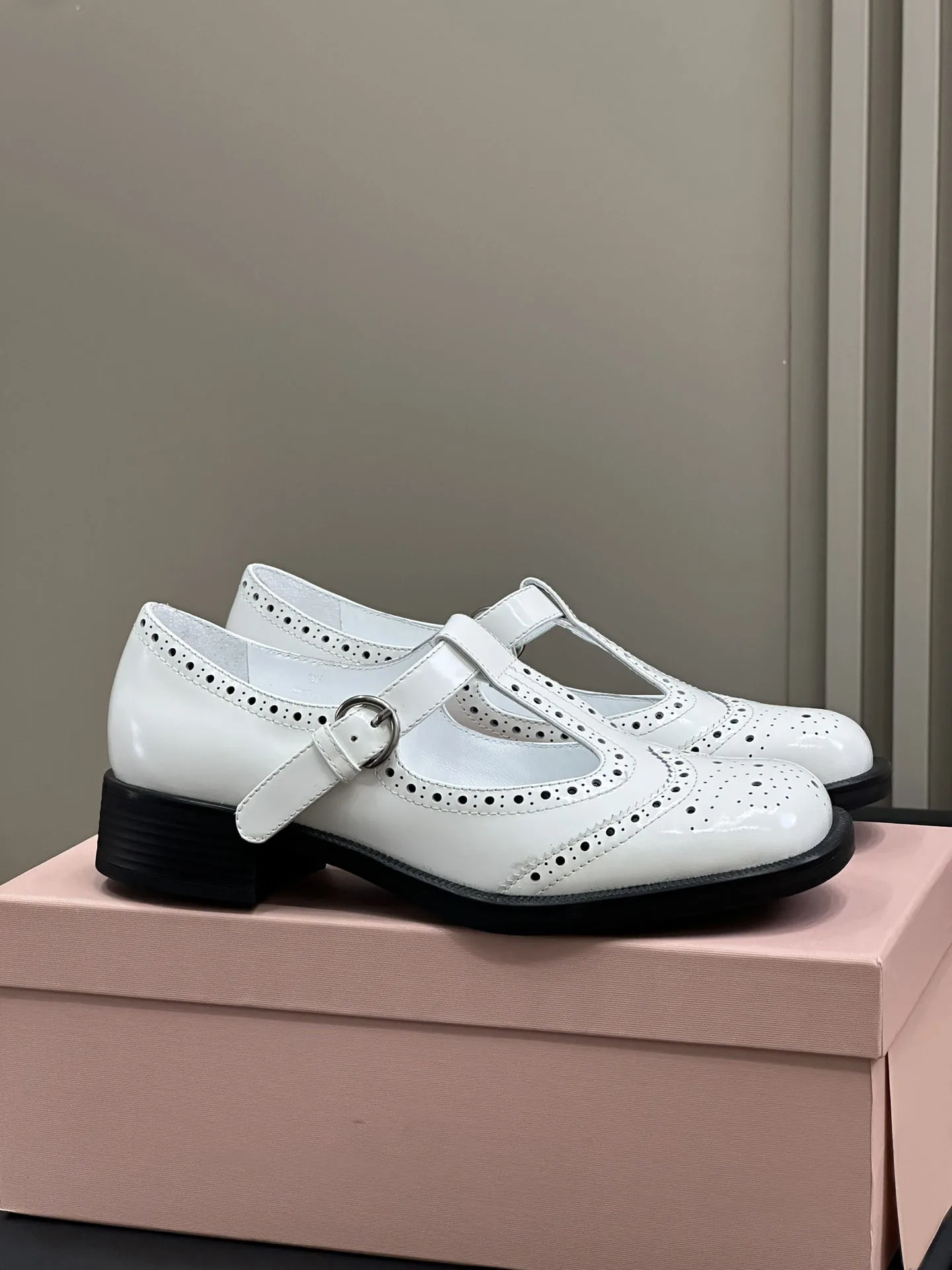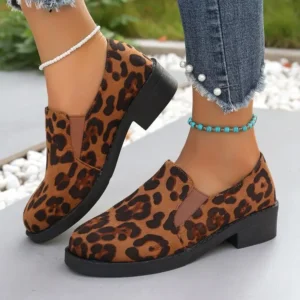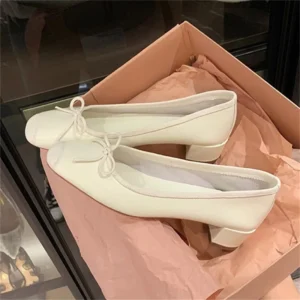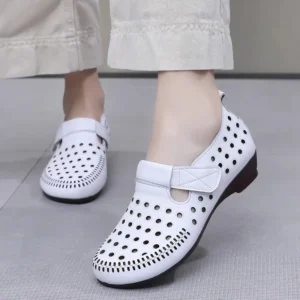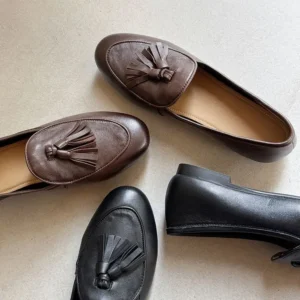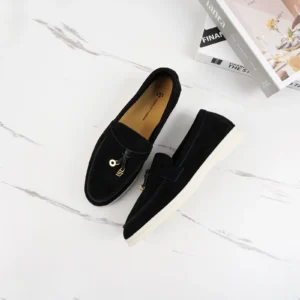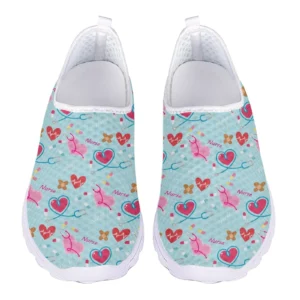Introduction
The search for the perfect pair of loafers often leads to a frustrating compromise between style and comfort. But what exactly makes a loafer truly “foot-friendly”? At its core, a foot-friendly loafer prioritizes the natural anatomy of your feet while still delivering the sleek, sophisticated look that makes loafers a wardrobe staple.
Today’s discerning women are no longer willing to sacrifice comfort for style. The growing demand for loafers that support foot health while maintaining elegant aesthetics has pushed designers to rethink traditional approaches. Many common foot problems have roots in poorly designed footwear:
- Pinched toes leading to bunions and hammertoes
- Inadequate arch support causing plantar fasciitis
- Rigid materials creating pressure points and blisters
- Insufficient cushioning resulting in general foot fatigue
This guide explores the essential design elements that create truly comfortable loafers – from premium materials and toe box construction to insole engineering and outsole flexibility. Whether you’re battling specific foot conditions or simply want to avoid discomfort, understanding these principles will transform how you evaluate comfortable round toe loafer styles.
Understanding Foot Anatomy and Its Relationship to Loafer Design
Our feet are remarkably complex structures, featuring 26 bones, 33 joints, and over 100 muscles, tendons, and ligaments. This intricate design allows for flexibility, balance, and shock absorption – capabilities that proper loafer design should support rather than hinder.
Traditional loafers often fail to accommodate natural foot mechanics in several key ways:
- Restrictive toe boxes compress the forefoot, preventing natural toe splay
- Flat insoles provide minimal support for the three main foot arches (medial, lateral, and transverse)
- Rigid construction fights against the foot’s natural flexion points
- Insufficient cushioning fails to absorb impact at critical pressure points (heel and ball of foot)
Understanding how toe shape affects overall foot comfort is essential when evaluating loafers. The connection between foot structure and loafer design becomes evident in three critical zones:
- Toe Box: Should allow natural toe splay without compression
- Arch Area: Needs appropriate support to maintain proper alignment
- Heel Cup: Requires stability and cushioning to prevent slippage and absorb shock
Proper support in these areas prevents not just immediate discomfort but long-term issues like plantar fasciitis, bunions, and general foot fatigue that can impact overall posture and mobility.
Premium Materials: The Foundation of Foot-Friendly Loafers
The materials used in loafer construction form the foundation of comfort and longevity. Quality materials don’t just feel better immediately – they adapt to your unique foot shape over time, creating a custom-like fit that mass-produced synthetics simply cannot match.
Superior upper materials create the crucial difference in comfort:
- Full-grain leather: Offers excellent breathability, gradually conforms to foot shape, and develops a beautiful patina with wear
- Suede: Provides gentle flexibility and adapts easily to foot contours while offering a sophisticated texture
- Premium textiles: Can offer lightweight breathability and stretch where needed
The distinction between natural and synthetic materials becomes particularly important for foot health. Natural materials generally offer superior breathability, preventing the moisture buildup that leads to odor and potential skin issues. They also tend to flex and give in all the right places, responding to the foot’s movement patterns.
Equally important is the quality of interior linings. Soft, non-abrasive linings prevent friction that causes blisters, while moisture-wicking properties keep feet dry and comfortable throughout the day. Look for seamless construction in high-friction areas to further reduce irritation potential.
Investing in quality leather options for flat loafers delivers long-term value that extends beyond mere durability. Premium materials create a virtuous cycle: they mold to your feet, distribute pressure more evenly, and generally age with grace rather than deteriorating.
The Ideal Toe Box: Ensuring Freedom of Movement
A properly designed toe box is perhaps the most critical element of foot-friendly loafer construction. This forward section of the shoe determines whether your toes can spread naturally (essential for balance and comfort) or are compressed into unnatural positions that lead to pain and deformity.
An optimal toe box provides:
– Sufficient width to allow natural toe splay during standing and walking
– Adequate height to prevent pressure on toenails and upper foot structures
– Gently contoured shape that follows the natural foot outline without squeezing
Different toe box shapes suit different foot types. While comparing different toe box shapes and their impact on comfort, consider:
- Round toe boxes: Offer the most natural shape for toe splay and generally provide the best accommodation for wider feet
- Square toe boxes: Can provide good toe room while maintaining a structured appearance
- Almond toe boxes: A middle ground between pointed and round, offering a slightly elongated appearance without severe compression
The implications of toe box design extend beyond immediate comfort. Restrictive toe boxes can contribute to painful conditions including bunions, hammertoes, and neuromas. Conversely, a properly designed toe box helps maintain proper toe alignment and allows for natural foot mechanics.
For many people, especially those with wider feet or existing toe conditions, foot-friendly round toe designs provide the ideal balance between style and function, allowing for natural movement while still presenting a refined silhouette.
Insole Engineering: The Secret to All-Day Support
The insole forms the hidden foundation of a truly comfortable loafer. This critical component provides the interface between your foot and the shoe, distributing pressure, absorbing shock, and supporting your unique arch profile.
A well-engineered insole system incorporates several essential elements:
- Cushioning materials: Quality insoles utilize materials like memory foam, cork, or EVA foam that compress under pressure points and recover when pressure is removed
- Anatomical contouring: The best insoles feature gentle curves that mirror the foot’s natural shape, supporting all three arches
- Proper density gradients: Strategic firmness variations provide support where needed and cushioning where preferred
- Moisture management: Materials that wick away perspiration help maintain dry comfort throughout the day
Arch support deserves special attention as it varies significantly between foot types. High arches need greater cushioning and accommodation, while flat feet benefit from firmer, more structured support. The ability to remove insoles provides valuable flexibility, allowing for custom orthotics if needed.
Quality insoles don’t just prevent discomfort – they actively distribute weight evenly across the foot, reducing pressure points and preventing issues like metatarsalgia (pain in the ball of the foot). They also provide essential shock absorption that protects joints throughout the entire body.
For those seeking the ultimate in underfoot comfort, loafers designed with superior insole comfort feature technologies that cradle the foot properly while providing lasting resilience against compression.
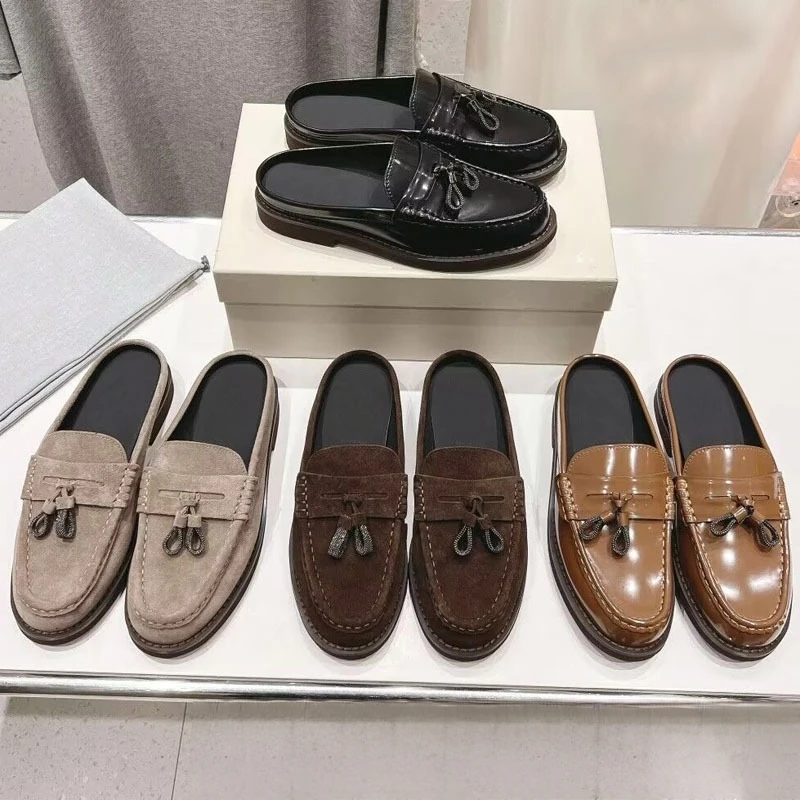
Outsole Construction: Balancing Flexibility and Stability
The outsole is your point of contact with the world, and its design dramatically affects both comfort and function. An ideal outsole strikes the perfect balance between flexibility and stability while providing appropriate traction and shock absorption.
Key considerations in outsole design include:
- Material selection: Premium rubber compounds offer excellent durability and shock absorption, while leather outsoles provide elegant flexibility and breathability
- Flex points: Properly placed flexibility zones should align with your foot’s natural bend points, particularly at the ball of the foot
- Tread patterns: Subtle but effective traction elements prevent slipping without creating a bulky appearance
- Profile thickness: The ideal thickness varies by design, but should provide adequate shock absorption without excessive weight
- Weight considerations: Unnecessarily heavy outsoles contribute significantly to foot fatigue during extended wear
The outsole design directly influences your walking gait and posture. Excessively rigid outsoles force your foot to work against the shoe, while overly soft ones may not provide enough support. The best designs move with your foot, supporting its natural motion patterns.
Many round toe loafers with proper outsole design for wide feet feature thoughtful flexibility mapping that allows the shoe to bend exactly where your foot needs it to, creating a harmonious relationship between foot and footwear.
The Heel Counter: Providing Essential Stability Without Restriction
Often overlooked but crucial for comfort, the heel counter is the structured area that wraps around the back of your foot. This component plays a vital role in stabilizing the rearfoot and preventing uncomfortable heel slippage.
A well-designed heel counter:
– Provides gentle but firm support that keeps the heel properly positioned
– Features adequate padding to prevent irritation of the Achilles tendon area
– Strikes an optimal balance between structure and flexibility
– Integrates seamlessly with the insole to create comprehensive rear-foot stability
The heel counter significantly impacts overall foot alignment and comfort. When too rigid, it can create pressure points and blisters; when too soft, it fails to provide necessary support and allows the foot to slide forward, compressing toes. The ideal design offers just enough structure to stabilize without restricting natural movement.
Quality heel construction includes appropriate cushioning around the collar area to protect sensitive ankle bones and prevent the dreaded “breaking in” period associated with many new shoes. This attention to detail is a hallmark of crucial comfort features in everyday loafers.
Perfecting the Fit: The Goldilocks Principle in Loafer Design
Even with excellent individual components, overall fit remains paramount in creating truly foot-friendly loafers. The “Goldilocks principle” applies perfectly here – the fit should be not too loose, not too tight, but just right.
Achieving optimal fit involves several considerations:
- Width options: Feet vary significantly in width, making multiple width offerings essential for accommodating different foot shapes
- Instep height: The area over the top arch of the foot needs appropriate space and flexibility to prevent uncomfortable pressure
- Heel-to-toe ratio: The relationship between heel width and toe box width should follow natural foot proportions
- Adaptive elements: Features like elastic goring panels or adjustable straps can enhance the customization of fit
- Volume consideration: Overall interior space should accommodate foot volume without excess movement
Loafers present unique fitting challenges compared to laced shoes. Without adjustable closures, the design must perfectly balance security and comfort. Too loose, and the foot slides forward; too tight, and pressure points develop quickly.
Quality loafers should require minimal “breaking in.” While some natural materials will soften and conform slightly, any shoe requiring an extended painful period to become comfortable likely has fundamental design flaws. The best loafers feel good immediately and become even better with wear.
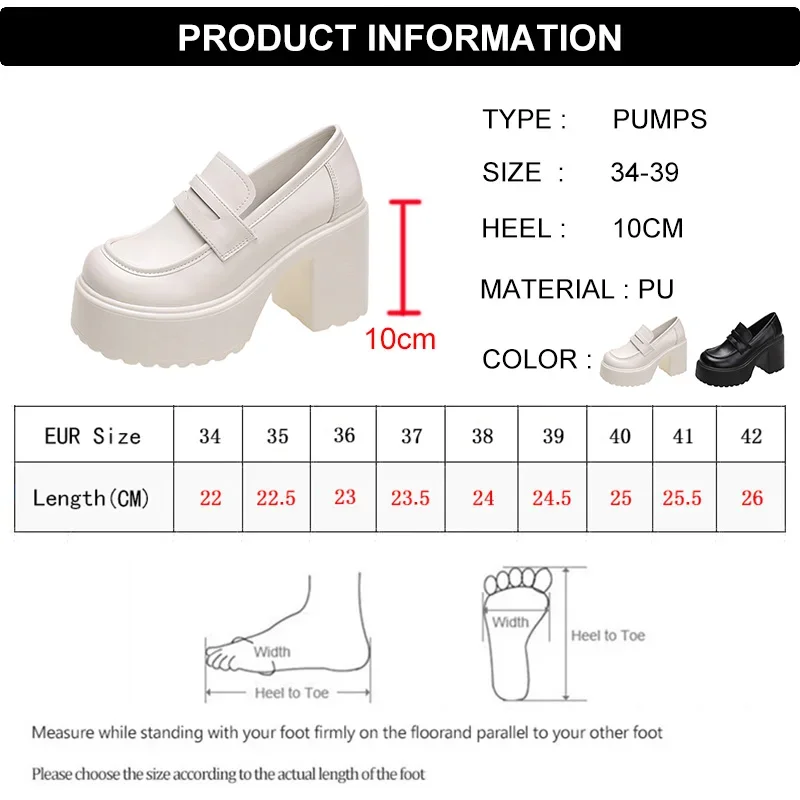
Design Solutions for Common Foot Conditions
Thoughtful loafer design can address specific foot conditions without compromising style. Understanding these adaptations helps those with particular foot concerns find appropriate options.
| Foot Condition | Design Features That Help | How It Helps |
|---|---|---|
| Bunions | Wide toe box, soft/flexible upper materials | Reduces pressure on the protruding joint and prevents friction |
| Plantar Fasciitis | Enhanced arch support, cushioned heel cup | Reduces strain on the plantar fascia and absorbs heel impact |
| Flat Feet | Structured arch support, stability features | Provides necessary support for collapsed arches and prevents overpronation |
| High Arches | Extra cushioning, flexible construction | Accommodates rigid foot structure and improves shock absorption |
| Wide Feet | Extended width options, rounded toe shape | Prevents compression and allows natural foot spread |
| Morton’s Neuroma | Metatarsal support, roomy forefoot | Reduces pressure on nerve tissue between toes |
The beauty of modern shoe design is that these accommodative features can be integrated subtly without creating an orthopedic appearance. Quality materials and thoughtful construction allow for these modifications while maintaining elegant profiles.
For those needing specific comfort features, loafers designed for extended walking comfort incorporate many of these adaptive elements while maintaining sophisticated styling suitable for various occasions.
Revolutionary Comfort Technologies in Modern Loafer Design
Innovation continues to expand the possibilities for combining style and comfort in loafer design. Modern technology has introduced remarkable advancements that enhance foot-friendliness without visual compromise.
Notable innovations include:
- Advanced cushioning systems: Targeted gel or air pocket technologies that provide precise impact absorption exactly where needed
- Lightweight support structures: Carbon fiber and composite materials that offer strength without bulk or weight
- Temperature-regulating linings: Materials that actively manage foot temperature and moisture for consistent comfort
- Flexible construction methods: New stitching and attachment techniques that allow greater natural movement
- Memory materials: Components that respond to body heat to create customized fit profiles
These technologies represent significant improvements over traditional construction methods, allowing for better foot movement, improved weight distribution, and enhanced durability. The best implementations integrate these advances invisibly, maintaining classic aesthetics while delivering modern performance.
The latest innovations in comfortable footwear design continue to push boundaries, creating loafers that support natural foot function while reducing fatigue – even during extended wear. These advancements benefit everyone from those with specific foot conditions to those who simply appreciate all-day comfort.
Beyond Design – Evaluating Long-Term Comfort
While understanding design principles provides an excellent foundation, putting this knowledge into practice when evaluating actual loafers requires additional consideration. Personal fit and comfort are ultimately subjective experiences that depend on your unique foot structure and needs.
How to Assess a Loafer’s Comfort Potential Before Purchase
Determining whether a loafer will truly provide lasting comfort requires methodical evaluation. These practical assessment techniques help identify truly foot-friendly options:
- Bend test: Gently flex the shoe to ensure it bends primarily at the ball of the foot (where your foot naturally bends) rather than in the middle or not at all
- Twist test: Lightly twist the shoe from heel to toe – it should offer some resistance while not being completely rigid
- Interior inspection: Run your hand inside to check for seams, rough spots, or transitions that might cause irritation
- Weight assessment: Hold the shoe and evaluate if it feels unnecessarily heavy, which can contribute to fatigue
- Time-of-day considerations: Try shoes later in the day when feet are naturally more swollen to ensure adequate space
Remember that even well-designed shoes may require a short adjustment period. Premium materials like leather typically conform to your unique foot shape within a few wears. However, any shoe that causes actual pain (rather than just awareness) likely has fundamental fit issues.
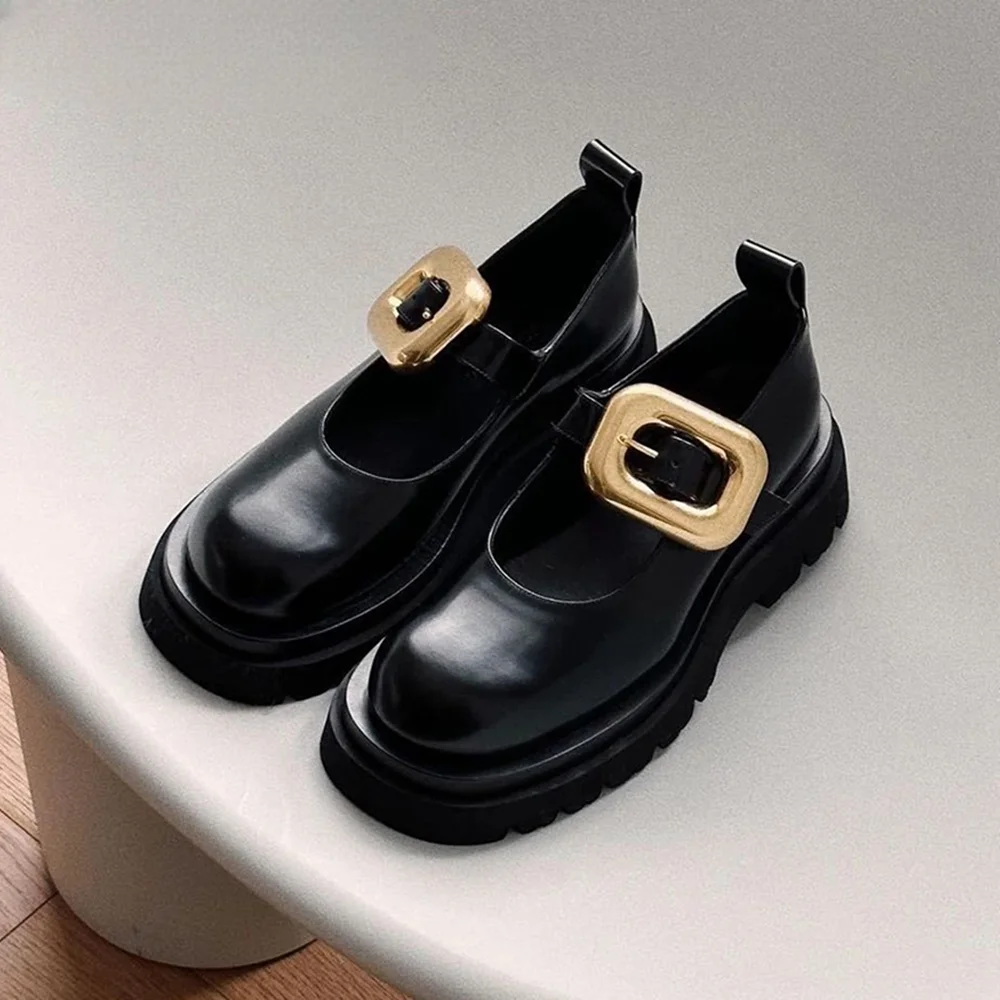
Classic loafer designs with comfort-focused features can provide excellent starting points for those seeking both traditional styling and modern comfort considerations.
Women's Comfortable Flat Loafers, Women's Leopard Print Loafers, Women's Low Heel Loafers
$82.50 Select options This product has multiple variants. The options may be chosen on the product pageWomen's Block Heel Loafers, Women's Square Heel Loafers, Women's Square Toe Flat Loafers
Price range: $73.61 through $86.41 Select options This product has multiple variants. The options may be chosen on the product pageWomen's Comfortable Flat Loafers, Women's Leather Flat Loafers, Women's Round Toe Flat Loafers
$124.88 Select options This product has multiple variants. The options may be chosen on the product pageWomen's Black Flat Loafers, Women's Black Penny Loafers, Women's Classic Tassel Loafers
$194.28 Select options This product has multiple variants. The options may be chosen on the product pageWomen's Loafer Mules, Women's Suede Flat Loafers
$190.23 Select options This product has multiple variants. The options may be chosen on the product pageWomen's Classic Driving Loafers, Women's Classic Penny Loafers, Women's Comfortable Flat Loafers
$75.28 Select options This product has multiple variants. The options may be chosen on the product page
Are All Premium Loafers Automatically Foot-Friendly?
A common misconception is that price directly correlates with comfort. While quality materials certainly contribute to comfort potential, many high-end loafers prioritize fashion-forward aesthetics over foot health. Some premium brands focus on exclusive materials or distinctive styling while actually incorporating design elements that compromise comfort.
The true measure of a loafer’s quality should include both materials and ergonomic considerations. An informed shopper looks beyond brand prestige to evaluate specific comfort features:
- Does the shape accommodate natural foot anatomy?
- Are materials both premium and functional?
- Does construction allow appropriate flexibility?
- Is cushioning strategically placed for actual comfort benefit?
At Artisan Haul, we believe the most luxurious aspect of premium footwear isn’t the price tag or label – it’s the exceptional experience of wearing shoes that truly support your feet throughout active days.
Can Foot-Friendly Loafers Still Be Stylish?
Absolutely! The notion that comfort requires bulky, orthopedic-looking designs is outdated. Modern approach to loafer design proves that foot-friendly features can be incorporated while maintaining sleek, sophisticated aesthetics.
Thoughtful design strategies can integrate comfort elements invisibly:
- Anatomically correct toe shapes that appear elegant from the exterior view
- Strategic cushioning placed inside the shoe rather than visibly changing its profile
- Premium materials that offer flexibility without sacrificing structured appearance
- Subtle color blocking or design elements that visually elongate while providing adequate width
The style and comfort benefits of round toe designs demonstrate how small adjustments to traditional silhouettes can dramatically improve comfort without sacrificing visual appeal. True style comes not just from how a shoe looks, but from the confidence and ease of movement it provides.
Conclusion
The quest for truly foot-friendly loafers doesn’t require sacrificing style for comfort. By understanding the essential elements of proper design – from materials and toe box construction to insole support and outsole flexibility – you can identify options that nurture foot health while delivering sophisticated aesthetics.
The best loafers work in harmony with your foot’s natural structure and movement patterns rather than forcing conformity to arbitrary design standards. When your shoes support proper alignment and function, the benefits extend beyond immediate comfort to long-term foot health and overall wellbeing.
As consumer demands evolve, forward-thinking brands continue developing loafers that seamlessly integrate comfort technology with timeless style. By applying the principles outlined in this guide, you can confidently select loafers that keep you looking and feeling your best with every step.

